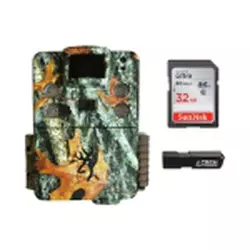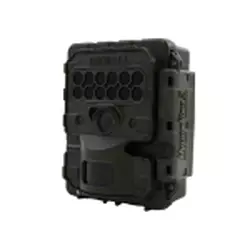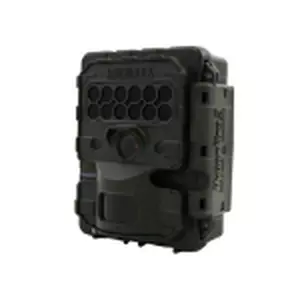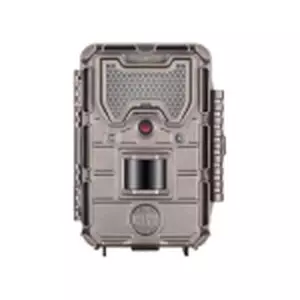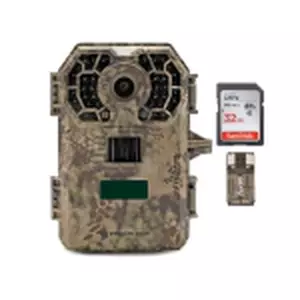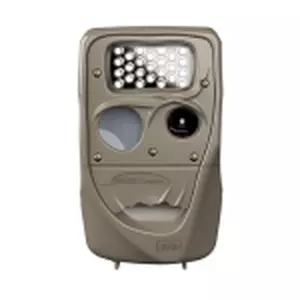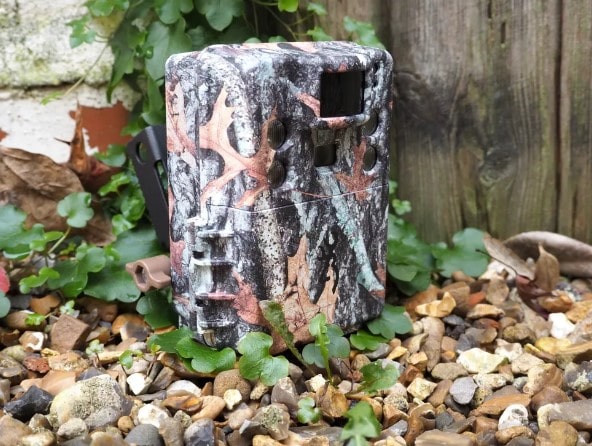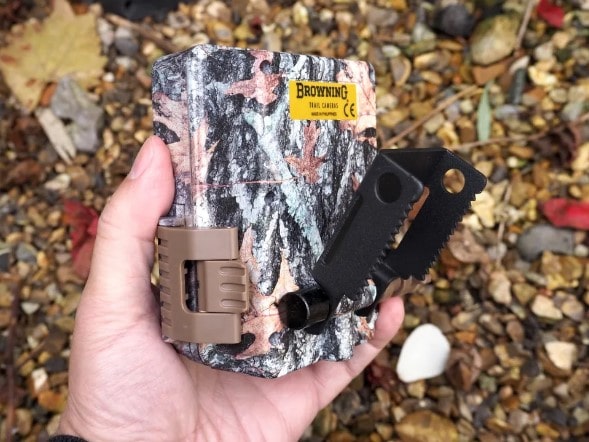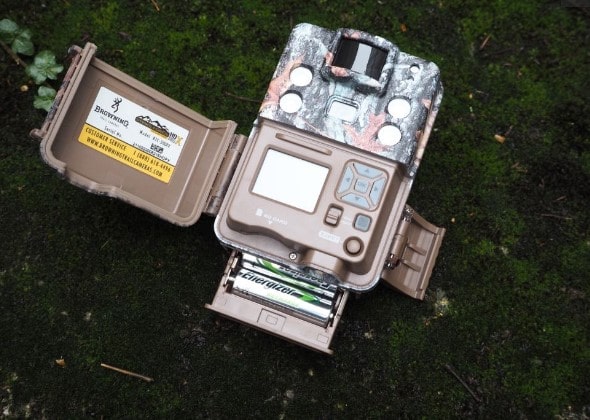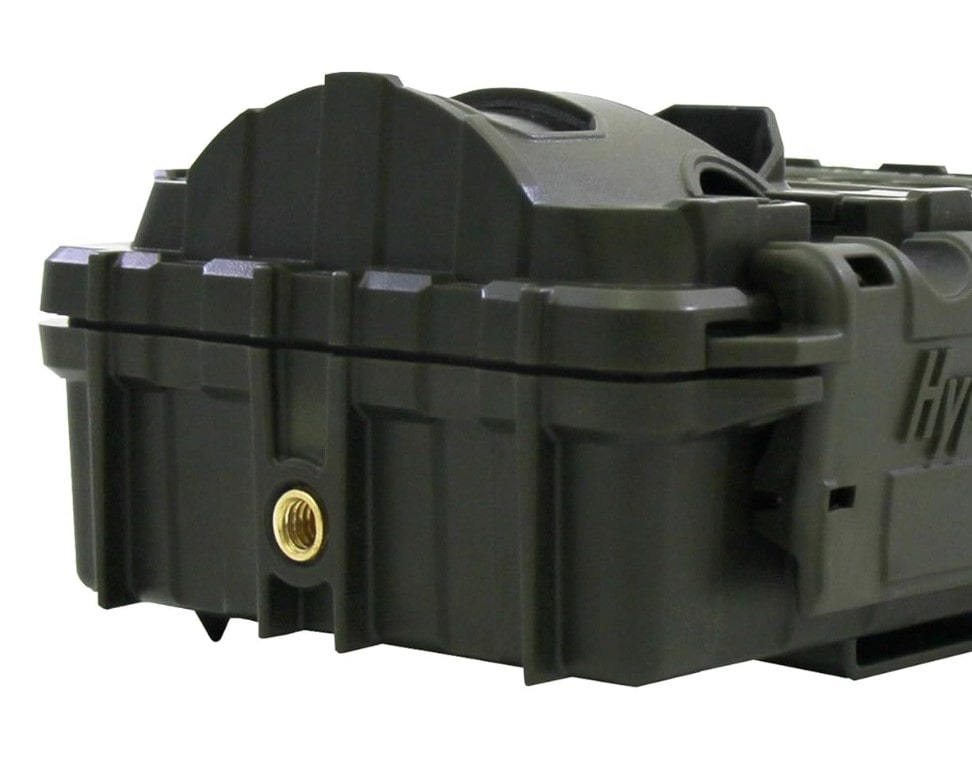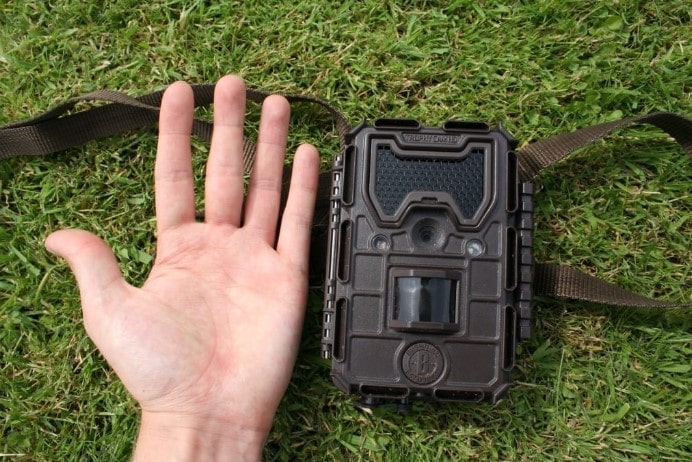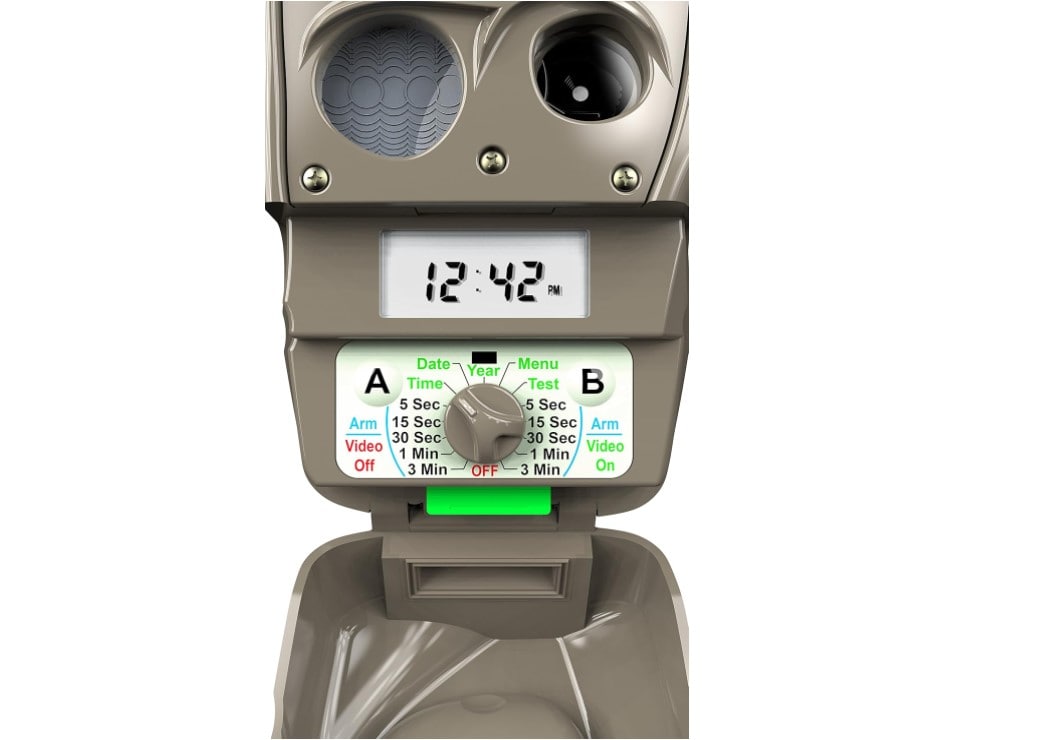Best Non Cellular Trail Camera
Okay, imagine this: It's 2 AM, pitch black, and I'm trudging through the woods, flashlight in hand, swatting mosquitoes the size of small birds. Why, you ask? Because I'm on a mission to check my trail cameras, and let me tell you, the anticipation is killing me. Will I find evidence of that elusive buck I've been tracking? Or perhaps I'll discover a family of raccoons having a midnight feast at my bait station. This, my friends, is the addictive world of trail camera enthusiasts, and today, we're diving deep into the realm of non-cellular trail cameras.
Now, you might be wondering, "Why non cellular?" Well, let me spill the tea. While those fancy cellular trail cams might seem like the cat's pajamas, they're not always the best choice. Maybe you're like me - stubborn about keeping things simple and not wanting to fuss with monthly fees. Or perhaps you're venturing into areas where cell service is as rare as a unicorn sighting. Whatever your reason, fear not! The world of trail cameras without wifi is vast and exciting.
In this guide, we're going to explore top trail cams that dont need cellular. I've spent more sleepless nights than I care to admit testing these bad boys, and I'm here to share the good, the bad, and the downright ugly. We'll wade through the tech specs, decipher the jargon, and by the end of this, you'll be armed with all the knowledge you need to choose the best trail camera non cellular options out there.
So, grab your favorite beverage (I'm nursing a strong cup of joe as I type this), get comfy, and let's embark on this wild journey through the world of trail cameras that don't need cellular connections. Trust me, it's going to be a hoot!
If you're in a hurry, here are my top two picks for the best non cellular trail cam options:
We may earn a small commission if you buy via our links - it helps keep gagadget.com running.
Table of Contents:
- Best Non Cellular Trail Camera: A Buyer's Guide
- Top 5 Trail Cams that Dont Need Cellular of 2026
- Best Trail Camera Without WiFi: Comparison
- Browning Strike Force HD Pro X
- Reconyx HyperFire 2 HF2X Covert IR
- Bushnell Trophy Cam HD Essential E3
- Stealth Cam G42NG
- Cuddeback E2 Long Range IR
- Best Trail Camera Non Cellular FAQs
Best Non-Cellular Trail Camera: A Buyer's Guide
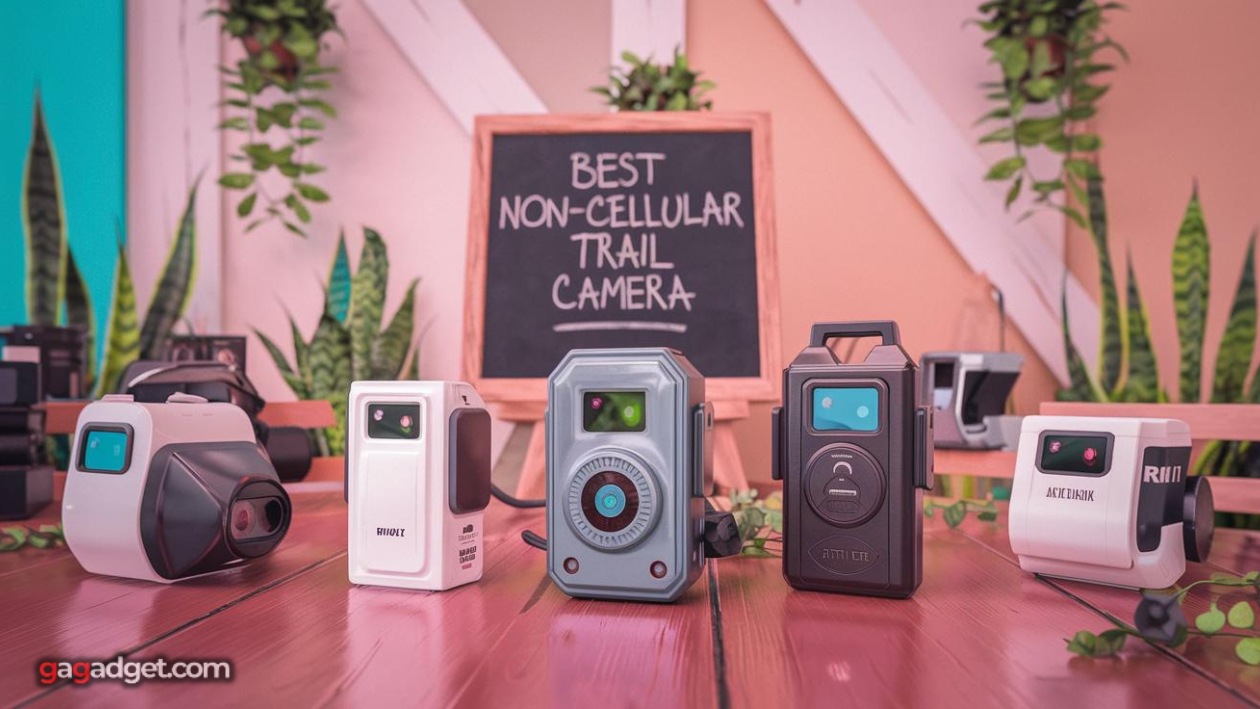
Alright, fellow nature enthusiasts, let's dive into the nitty-gritty of choosing the best trail camera without wifi. Now, I know what you're thinking - "Can't I just grab any old camera and call it a day?" Well, you could, but then you'd be missing out on all the juicy details these high-tech gadgets can capture. So, let's break it down, shall we?
The Need for Speed: Trigger Time and Recovery Rate
First things first - trigger speed. This is how quickly your camera snaps a photo after detecting motion. Trust me, when you're trying to capture a lightning-fast deer or a sneaky fox, every millisecond counts. The best non cellular trail camera options out there can trigger in less than half a second. Anything slower, and you might end up with a lot of photos of animal backsides - not exactly National Geographic material.
Remember, in the world of wildlife, if you're not first, you're last. A fast trigger speed can mean the difference between capturing that perfect shot and missing it entirely.
But trigger speed is only half the battle. You also need to consider recovery rate - how quickly the camera can reset and be ready for the next shot. Imagine a whole herd of deer passing by. A slow recovery rate means you might only catch the first and last deer, missing all the action in between.
Picture Perfect: Image Quality and Resolution
Now, let's talk pixels. While it's tempting to go for the highest megapixel count you can find, more isn't always better when it comes to trail cameras without wifi. Why? Because higher resolution means larger file sizes, which can quickly fill up your SD card. Plus, unless you're planning on blowing up your images to billboard size, you probably don't need 20MP shots of every squirrel that crosses your camera's path.
What's more important is the quality of the sensor and the lens. A good 12MP camera with a high-quality sensor will often outperform a mediocre 24MP camera. Look for cameras that produce clear, crisp images with good color reproduction and contrast.
Night Vision: Seeing in the Dark
Let's face it, some of the most interesting wildlife activity happens after dark. That's where infrared (IR) technology comes in. When choosing a non cellular trail cam, pay attention to the IR flash range and the quality of nighttime images.
Don't be fooled by marketing hype about extreme IR ranges. A camera that claims a 100-foot range but produces blurry, washed-out images at that distance isn't doing you any favors.
Also, consider whether you need a "low glow" or "no glow" IR flash. Low glow can be more effective but might spook some animals (and is more visible to other humans), while no glow is completely invisible but typically has a shorter range.
Battery Life: Keep on Clicking
Unless you enjoy spending every weekend trudging through the woods to change batteries (no judgment if you do), battery life should be a key consideration. The best trail camera non cellular models can last for months on a single set of batteries. Look for cameras that use standard AA batteries - they're cheap and easy to find.
Some cameras also have the option to use external battery packs or even solar panels for extended use. These can be great if you're monitoring a remote area and can't check on your camera frequently.
Durability: Weathering the Storm
Your trail camera is going to be out there in the elements, rain or shine, snow or heatwave. It needs to be tough. Look for cameras with robust, weatherproof housing. A good IP rating (like IP66 or IP67) can give you peace of mind that your camera will survive whatever Mother Nature throws at it.
Remember, a trail camera is an investment. The last thing you want is to come back to find your camera has turned into a very expensive squirrel house because it couldn't handle a little rain.
So there you have it, folks - the key factors to consider when choosing the best non cellular trail camera. Keep these in mind, and you'll be well on your way to capturing those magical moments in the wild. Now, let's take a look at some of the top contenders in the trail cams that don't need cellular world!
Top 5 Trail Cams that Dont Need Cellular of 2026
Alright, nature lovers, it's time for the main event. After countless hours in the field, numerous cups of coffee, and more than a few encounters with angry mosquitoes, I've narrowed down the top five non cellular trail cams that are worth your hard-earned cash. These cameras have proven their mettle in real-world conditions, capturing everything from majestic bucks to mischievous raccoons. Let's dive in!
- Lightning-fast 0.22-second trigger speed
- Impressive 120-foot flash range
- Compact and easy to conceal
- Long battery life (up to 12 months)
- Smart IR Video for extended recording
- Exceptional image quality despite lower megapixel count
- Ultra-fast 0.2-second trigger speed
- No-glow covert IR flash with 150-foot range
- Incredible battery life (up to 40,000 images)
- Extreme weather resistance (-20°F to 120°F)
- Excellent value for money
- Good image quality with 16MP resolution
- Long battery life (up to 12 months)
- Adjustable PIR sensor
- Useful field scan mode
- "No Glo" IR technology for complete stealth
- 1080p HD video capability
- Advanced blur reduction technology
- Customizable multi-shot settings (1-9 images per trigger)
- Time-lapse mode with PIR override
- Fast 0.25-second trigger speed
- High 20MP image resolution
- 100-foot IR flash range
- Zone Control detection for flexible monitoring
- Affordable price point
Best Trail Camera without WiFi: Comparison
Now that we've met our contenders, let's see how they stack up against each other. I've put together this handy comparison table to help you see the key specs at a glance. Remember, though, numbers don't tell the whole story - each of these trail cameras without wifi has its own strengths and quirks that we'll dive into in the individual reviews.
| Specification | Browning Strike Force HD Pro X | Reconyx HyperFire 2 HF2X | Bushnell Trophy Cam HD Essential E3 | Stealth Cam G42NG | Cuddeback E2 Long Range IR |
| Image Resolution | 20 MP | 3 MP (native) | 16 MP | 10 MP | 20 MP |
| Video Resolution | 1600x900 HD | 720p HD | 720p HD | 1080p HD | 720p HD |
| Trigger Speed | 0.22 seconds | 0.2 seconds | 0.3 seconds | 0.5 seconds | 0.25 seconds |
| Flash Range | 120 feet | 150 feet | 80 feet | 100 feet | 100 feet |
| Battery Life | Up to 12 months | Up to 40,000 images | Up to 12 months | Not specified | Not specified |
| Special Features | Smart IR Video, Timelapse Plus | No-glow IR, extreme weather resistance | Adjustable PIR, field scan | Blur reduction, time-lapse with PIR override | Zone Control detection |
Now that we've got the lay of the land, let's dive into each of these non cellular trail cams and see what makes them tick!
Browning Strike Force HD Pro X Non Cellular Trail Camera Review
Editor`s Choice
Let me tell you about the Browning Strike Force HD Pro X - this little powerhouse has become my go-to trail camera without wifi for those tricky, tight spots where you need a compact camera that packs a punch.
First off, let's talk about speed. With a trigger time of 0.22 seconds, this camera is faster than my reflexes after my third cup of morning coffee. It's perfect for capturing those blink-and-you'll-miss-it moments in the wild. And with a recovery time of 0.6 seconds, it's ready for action again before you can say "deer".
The image quality on this non cellular trail cam is nothing to sneeze at either. With 20MP resolution, you'll be able to count the whiskers on that fox that's been raiding your chicken coop. The 1600x900 HD video with sound is a nice touch too - I've captured some hilarious animal antics that are definitely worthy of a comedy wildlife photography award.
One feature I absolutely love is the adjustable IR flash. Being able to tweak the flash intensity and range (up to 120 feet!) means you can customize your setup for different scenarios. Staking out a small clearing? Dial it back and save some battery. Trying to catch that elusive buck at the far end of your property? Crank it up and let 'er rip!
Speaking of batteries, this little beast can run up to 12 months on a set of 6 AA batteries. That's a lot of time in the field without having to trudge out for a battery change. Trust me, your feet will thank you.
The Strike Force isn't just about stills - its Smart IR Video feature is pretty nifty. It keeps recording as long as the action is happening, which has resulted in some pretty epic wildlife mini-movies on my SD card.
Of course, no trail camera is perfect. While the 1.5" color viewing screen is handy for setup and quick image checks, it's a bit small for detailed viewing in the field. And while 20MP sounds impressive, in low light conditions, some of that resolution is overkill and can lead to grainier images than you might expect.
Pros:
- Lightning-fast 0.22-second trigger speed
- Impressive 120-foot flash range
- Compact and easy to conceal
- Long battery life (up to 12 months)
- Smart IR Video for extended recording
Cons:
- Small 1.5" viewing screen
- High resolution can lead to grainier low-light images
Summary: The Browning Strike Force HD Pro X is a compact, feature-packed non cellular trail camera that delivers impressive performance for its size. Its fast trigger speed, long battery life, and adjustable IR flash make it a versatile choice for a variety of wildlife monitoring scenarios. While it may not have the largest viewing screen or the best low-light performance at full resolution, its overall package makes it a solid choice for anyone looking for a reliable, compact trail cam that doesn't need cellular connection.
Reconyx HyperFire 2 HF2X Covert IR Trail Cam without WiFi Review
Best Overall
Alright, let's talk about the Reconyx HyperFire 2 HF2X Covert IR. This is the kind of non cellular trail cam that makes professional wildlife researchers and serious enthusiasts weak in the knees. It's like the James Bond of trail cams - sophisticated, stealthy, and always gets the job done.
Now, I know what you're thinking - "Only 3MP resolution? In this day and age?" Hold your horses there, partner. This camera is proof that megapixels aren't everything. The images this beast produces are sharp, clear, and packed with detail. It's all about that high-quality sensor and superior image processing. I've gotten some shots from this camera that look like they could be in National Geographic.
Let's talk about speed. With a trigger time of 0.2 seconds, this camera is faster than a jackrabbit on a hot date. You're not going to miss any action with this bad boy. And the recovery time? A mere 0.5 seconds. It's like the camera equivalent of Muhammad Ali - float like a butterfly, sting like a bee.
One of the standout features of this trail camera without wifi is its no-glow covert IR flash. It's so stealthy, it makes ninjas look clumsy. With a range of up to 150 feet, you're going to capture nighttime images without spooking the wildlife or alerting any potential camera thieves.
Now, let's address the elephant in the room - the price. Yes, this camera is not cheap. But remember, you get what you pay for. The build quality on this thing is insane. It's built like a tank and can withstand extreme temperatures from -20°F to 120°F. I've had mine survive everything from blizzards to heatwaves, and it just keeps on ticking.
Battery life? Forget about it. This non cellular trail cam can capture up to 40,000 images on one set of batteries. I've had this camera out in the field for months at a time without needing to change batteries. It's like the Energizer Bunny of trail cameras.
One minor gripe - there's no built-in viewing screen. But honestly, for a camera of this caliber, you're going to want to view these images on a larger screen anyway to really appreciate the quality.
Pros:
- Exceptional image quality despite lower megapixel count
- Ultra-fast 0.2-second trigger speed
- No-glow covert IR flash with 150-foot range
- Incredible battery life (up to 40,000 images)
- Extreme weather resistance (-20°F to 120°F)
Cons:
- No built-in viewing screen
- Lower resolution may not suit all users
Summary: The Reconyx HyperFire 2 HF2X Covert IR is the cream of the crop when it comes to non cellular trail cameras. Its unparalleled build quality, insanely fast trigger and recovery times, and exceptional image quality make it a top choice for professionals and serious enthusiasts. While it comes with a hefty price tag and lacks a built-in viewing screen, its performance and reliability in the field are second to none. If you're looking for the best of the best in trail cams that don't need cellular connections, and you have the budget for it, the Reconyx HyperFire 2 HF2X Covert IR is hard to beat.
Bushnell Trophy Cam HD Essential E3 Camera Review
Bestseller
Ah, the Bushnell Trophy Cam HD Essential E3. If trail cameras were wrestlers, this would be the people's champion. It's not the fanciest, it's not the most expensive, but boy does it get the job done. This is the kind of non cellular trail camera that makes you wonder why anyone would pay more.
Let's start with the basics. This camera boasts a respectable 16MP resolution, which is more than enough for most wildlife monitoring needs. The images are clear, colorful, and detailed enough to make species identification a breeze. And with 720p HD video capability, you're not just getting stills - you're getting the whole story.
The trigger speed is a solid 0.3 seconds. Is it the fastest on our list? No. But is it fast enough to capture that buck before he disappears into the underbrush? You bet your camo hat it is. And with a recovery time of 1 second, it's ready for a follow-up shot before you can say "venison stew".
One thing I really appreciate about this trail camera without wifi is its adjustable PIR (Passive Infrared) sensor. You can set the sensitivity to low, medium, or high, depending on your specific needs. Trying to capture small game? Crank it up. Tired of getting hundreds of photos of swaying grass? Dial it back. It's like having a custom-tailored camera for each situation.
The low-glow infrared LEDs have a range of up to 80 feet. Now, I know what you're thinking - "But some of the other cameras have a longer range!" True, but 80 feet is plenty for most setups, and the image quality at night is surprisingly good. Plus, the low-glow technology means you're less likely to spook wary animals.
Battery life is another strong point for this non cellular trail cam. Bushnell claims up to 12 months on a single set of 8 AA batteries. In my experience, that's a bit optimistic if you're in a high-traffic area, but I've easily gotten 6-8 months out of a set. Not too shabby!
The Essential E3 also features a field scan mode, which is great for monitoring food plots or watching patterns develop over time. It's like having your own time-lapse nature documentary running 24/7.
Now, it's not all sunshine and rainbows. The lack of a built-in viewing screen can be a bit of a pain when you're setting up or checking the camera in the field. And while the 32GB SD card capacity is decent, some of the other cameras on our list can handle larger cards.
Pros:
- Excellent value for money
- Good image quality with 16MP resolution
- Long battery life (up to 12 months)
- Adjustable PIR sensor
- Useful field scan mode
Cons:
- No built-in viewing screen
- Shorter flash range (80 feet) compared to some competitors
- Limited to 32GB SD card capacity
Summary: The Bushnell Trophy Cam HD Essential E3 is a solid, dependable workhorse of a trail camera that doesn't need cellular connections. It offers a great balance of features, performance, and affordability that will satisfy most users. While it may not have all the bells and whistles of some higher-end models, its reliable performance, good image quality, and excellent battery life make it a fantastic choice for both beginners and experienced users alike. If you're looking for a trail camera that delivers great value for money, the Bushnell Trophy Cam HD Essential E3 should definitely be on your radar.
Stealth Cam G42NG Non Cellular Trail Cam Review
People`s Choice
Let's talk about the Stealth Cam G42NG, or as I like to call it, the Night Owl's Delight. This non-cellular trail camera is like that friend who always knows what's happening after dark - nothing gets past it.
First things first, let's address the elephant in the room - or should I say, the 42 black IR emitters in the room. That's right, this bad boy uses "No Glo" technology, making it invisible to both wildlife and any would-be camera thieves. It's so stealthy, it makes ninjas look like they're wearing disco balls.
The G42NG captures 10MP images, which might not sound impressive compared to some of the other cameras on our list. But let me tell you, sometimes less is more. These images are sharp, clear, and don't take up as much space on your SD card. Plus, with 1080p HD video capability, you're getting the whole story, not just snapshots.
Now, let's talk about that trigger speed. At 0.5 seconds, it's not winning any races against some of the speedier trail cameras without wifi. But what it lacks in trigger speed, it makes up for in customization. You can set it to capture anywhere from 1 to 9 images per triggering event. It's like having your own personal wildlife paparazzi.
One feature that really sets this non cellular trail cam apart is its advanced blur reduction technology. Ever get a photo of a deer that looks more like a brown smudge? Not with this camera. It's like it has image stabilization for wildlife on the move.
The G42NG also boasts a pretty nifty time-lapse mode with PIR override. What does that mean in English? Well, you can set it to take photos at set intervals, but it will still trigger on motion. So you get the best of both worlds - a complete record of what's happening in front of your camera, plus all the action shots.
Battery life is always a concern with trail cams, and while Stealth Cam doesn't provide specific numbers, I've found the G42NG to be pretty efficient. I've had it out in the field for months at a time without needing a battery change. Just remember to use high-quality batteries - this camera deserves the best!
Now, it's not all perfect. The recovery time between shots isn't specified, but in my experience, it's a bit on the slower side. And while the backlit menu display is handy for setup, the lack of a view screen means you can't check your images in the field.
Pros:
- "No Glo" IR technology for complete stealth
- 1080p HD video capability
- Advanced blur reduction technology
- Customizable multi-shot settings (1-9 images per trigger)
- Time-lapse mode with PIR override
Cons:
- Slower trigger speed (0.5 seconds) compared to some models
- No built-in viewing screen for image checking
- Battery life not specified by manufacturer
Summary: The Stealth Cam G42NG is a trail camera that doesn't need cellular connection and truly shines in nighttime wildlife monitoring. Its No Glo technology, combined with advanced blur reduction and customizable capture settings, make it an excellent choice for those focused on nocturnal wildlife or concerned about camera detection. While it may not have the fastest trigger speed or the highest resolution, its overall performance, especially in low-light conditions, makes it a strong contender in the world of non cellular trail cameras. If you're looking for a camera that can capture clear, detailed nighttime images without spooking wildlife, the Stealth Cam G42NG should be high on your list.
Cuddeback E2 Long Range IR Camera Review
Best Budget
Alright, folks, let's chat about the Cuddeback E2 Long Range IR. This is the kind of non-cellular trail camera that proves you don't need to sell a kidney to get quality wildlife photos. It's like the scrappy underdog in a feel-good sports movie - it might not have the fanciest equipment, but it's got heart, and it gets results.
Let's kick things off with the headline feature - that blazing fast 0.25-second trigger speed. This trail camera without wifi is quicker on the draw than a Wild West gunslinger. Blink, and you might miss it... but this camera won't. It's perfect for capturing those lightning-fast animals that other cameras might miss.
Now, let's talk pixels. The E2 boasts a whopping 20MP resolution. That's a lot of detail, folks. You'll be able to count the whiskers on a rabbit or the ticks on a deer (though I don't recommend the latter as a hobby). The color images during the day are vibrant and clear, giving you a true-to-life representation of the wildlife in your area.
The infrared flash on this bad boy has a range of up to 100 feet. That's a lot of ground to cover, and it does it without spooking the wildlife. The nighttime images are clear and detailed - no more mysterious blobs that could be anything from a raccoon to the Loch Ness Monster.
One feature I really appreciate is the Zone Control detection. This allows you to adjust the detection zone between wide angle and centered. It's like having a zoom lens for your motion sensor. Trying to monitor a game trail? Narrow it down. Want to see everything that moves in a clearing? Open it up wide.
Battery life is always a concern with trail cams, and while Cuddeback doesn't provide specific numbers, I've found the E2 to be pretty efficient. It runs on 8 AA batteries, and in my experience, you can get several months of use out of a single set.
Now, it's not all sunshine and rainbows. The recovery time is between 1 to 2 seconds, which is a bit on the slower side. And the 720p video, while decent, isn't going to win any cinematography awards. But hey, for this price point, something's gotta give.
Pros:
- Fast 0.25-second trigger speed
- High 20MP image resolution
- 100-foot IR flash range
- Zone Control detection for flexible monitoring
- Affordable price point
Cons:
- Slower recovery time (1-2 seconds)
- 720p video resolution lower than some competitors
- Battery life not specified by manufacturer
Summary: The Cuddeback E2 Long Range IR is a fantastic option for those looking for a high-performance, non cellular trail cam without breaking the bank. Its lightning-fast trigger speed and high-resolution images make it a solid choice for capturing wildlife activity, especially fast-moving animals. While it may not have all the advanced features of some pricier models, its overall performance and value for money make it a great choice for both beginners and budget-conscious experienced users. If you're looking for a trail camera that doesn't need cellular connection and delivers where it counts without emptying your wallet, the Cuddeback E2 Long Range IR deserves a serious look.
Best Trail Camera Non Cellular: FAQs
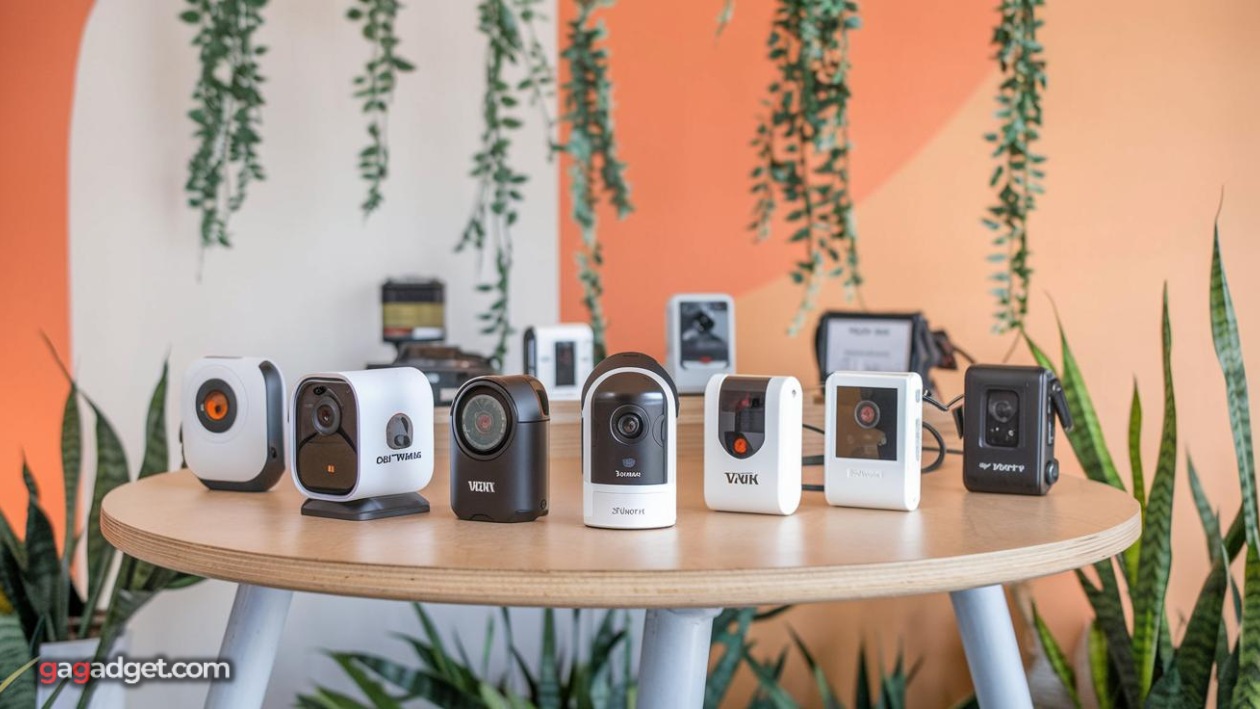
Alright, fellow trail camera enthusiasts, I've been inundated with questions about non cellular trail cameras. So, let's tackle some of the most common head-scratchers I've encountered. Grab a beverage, get comfy, and let's dive in!
What is the best non-cellular trail cam for battery life?
If you're looking for a trail camera without wifi that can outlast a marathon binge-watching session, the Browning Strike Force HD Pro X is hard to beat. This little powerhouse can run for up to 12 months on a single set of batteries. That's right, you could set it up on New Year's Day and it might still be clicking away when you're singing Auld Lang Syne the next year. Just remember, battery life can vary depending on usage and settings, so your mileage may vary.
How do non cellular cameras store and transmit images?
Non cellular trail cams are the old-school cool of the wildlife photography world. They store images and videos directly onto an SD card in the camera. There's no instant gratification here - you've got to physically retrieve the card or the camera to view your images. It's like Christmas morning every time you check your camera!
Can trail cams that don't need cellular connections be used for home security?
Absolutely! While they might not have the real-time alerting capabilities of some security-specific cameras, non-cellular trail cameras can be excellent for home security. Their rugged design, long battery life, and ability to capture clear images day and night make them great for monitoring your property. Just be sure to check local laws about video surveillance before pointing one at your neighbor's prize-winning rose bushes.
What's the difference between low-glow and no-glow IR on trail cameras without wifi?
Ah, the eternal debate of low-glow vs. no-glow. It's like choosing between stealth and power. Low-glow IR emits a faint red glow when capturing night images. It's generally brighter and can illuminate subjects at a greater distance, but there's a small chance it might spook some animals (or alert savvy trespassers). No-glow IR, on the other hand, is completely invisible. It's like a ninja in the night. The trade-off? Usually a shorter range and sometimes lower image quality. If you're after super-wary game or want maximum stealth, go no-glow. For everything else, low-glow usually gives better results.
How do I protect my non-cellular trail cam from theft?
Ah, the age-old question that's kept many a wildlife enthusiast up at night. First off, use a lock box. These metal enclosures protect your camera from both thieves and curious critters (I once had a bear try to take a selfie with one of my cameras). Secondly, consider using python cable locks to secure the camera to a tree. And lastly, camouflage is your friend. The best trail camera without wifi is one that nobody knows is there. Get creative with natural materials, but remember - you still need to be able to find it yourself!
What's the best non cellular trail cam for capturing fast-moving animals?
If you're trying to catch Usain Bolt of the animal kingdom, you need a camera with a lightning-fast trigger speed. The Reconyx HyperFire 2 HF2X is the speed demon you're looking for, with a trigger speed of 0.2 seconds. It's so fast, it could probably capture a hummingbird's wings mid-flap. The Cuddeback E2 is another speedy option, with a 0.25-second trigger speed.
Can I use a non-cellular trail camera in extreme weather conditions?
Most trail cams that don't need cellular connections are built tough, like the truck commercials say. They're designed to withstand rain, snow, heat, and cold. However, some are tougher than others. The Reconyx HyperFire 2 HF2X, for example, can operate in temperatures from -20°F to 120°F. That's a range that would make a weather reporter's head spin! Just remember, while the camera might survive, extreme cold can affect battery life, so plan accordingly.
What's the advantage of a non cellular cam over a cellular one?
Great question! Non-cellular trail cameras have several advantages. First, there's no monthly fee - once you buy it, that's it. Second, they can be used anywhere, not just where there's cell service. Ever tried to get a signal in the back of beyond? It's like finding a needle in a haystack... in the dark... underwater. Third, they often have better battery life since they're not constantly transmitting data. And lastly, some folks just prefer the simplicity and reliability of a non cellular trail cam. Sometimes, simpler is better!
Choosing Your Best Non Cellular Trail Cam
Well, folks, we've trekked through the dense forest of non-cellular trail cameras, dodged the underbrush of technical specifications, and emerged into the clearing of understanding. It's been quite a journey, hasn't it?
Choosing the best trail camera without wifi isn't about finding the one with the most megapixels or the longest list of features. It's about finding the right tool for your specific needs. Maybe you need the lightning-fast trigger of the Reconyx HyperFire 2 HF2X to capture those blink-and-you'll-miss-it moments. Or perhaps the stealth capabilities of the Stealth Cam G42NG are more your speed for covert operations.
For those who want a jack-of-all-trades, the Browning Strike Force HD Pro X offers a great balance of features and performance. Budget-conscious shoppers might lean towards the Cuddeback E2 Long Range IR, which proves you don't need to break the bank for quality results. And let's not forget the reliable Bushnell Trophy Cam HD Essential E3, a solid performer that won't let you down.
Remember, the top rated non-cellular trail cam is the one that fits your needs, your budget, and most importantly, the one you'll actually use. It's no good having a top-of-the-line camera if it's too complicated to set up or if you're too afraid of breaking it to take it out in the field.
So, whether you're tracking that elusive buck, conducting serious wildlife research, or just trying to figure out what's been raiding your trash cans at night (spoiler alert: it's probably raccoons), there's a non cellular trail cam out there for you. Now get out there, set up those cameras, and start capturing the wonders of the wild. Who knows? You might just snap the next viral sensation in the animal kingdom. Just remember to share the hilarious outtakes with the rest of us!
Happy trailing, folks! And remember, in the world of trail cameras without wifi, patience isn't just a virtue - it's a necessity. But trust me, when you finally get that perfect shot, it'll all be worth it.
Explore More:
